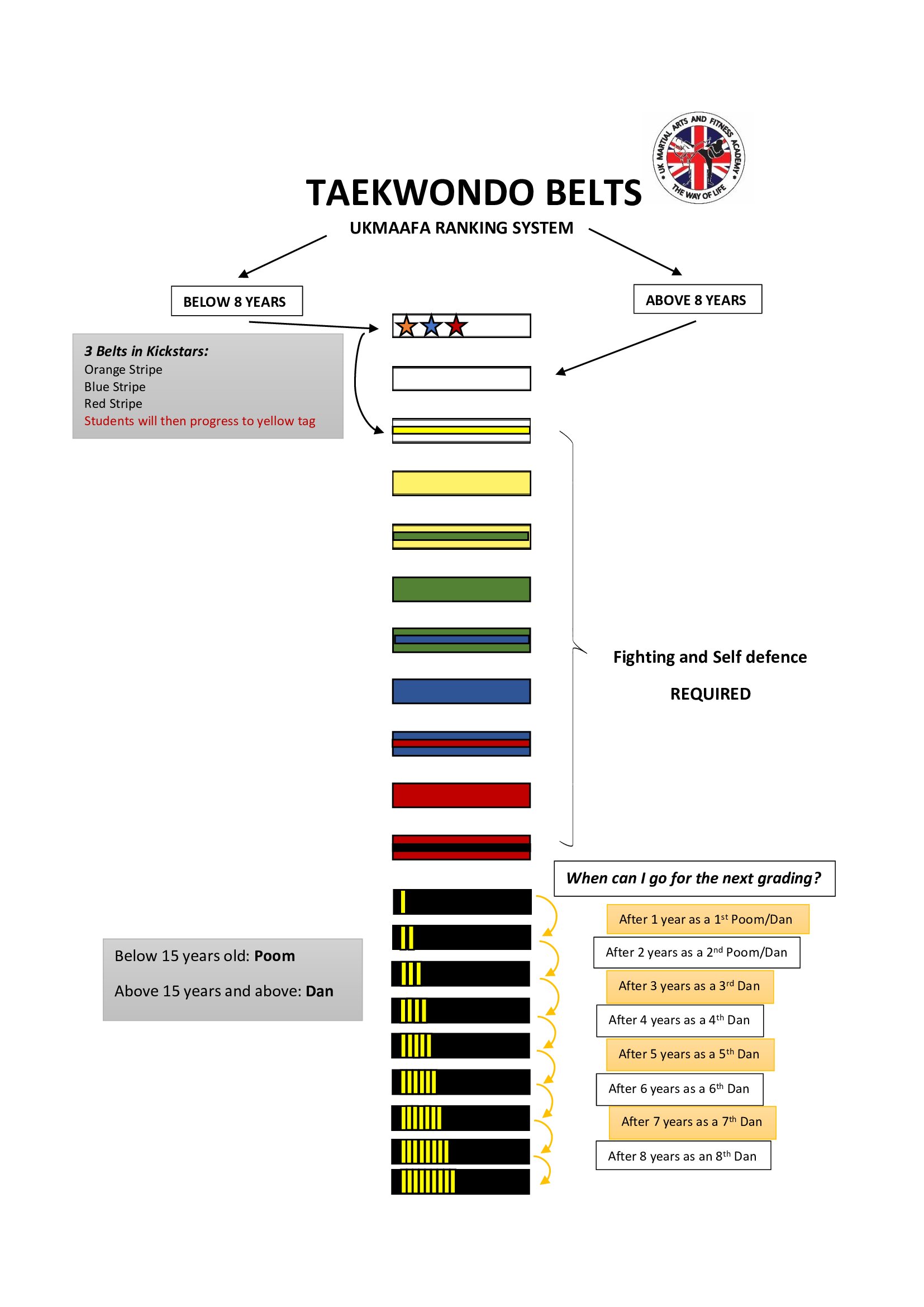Taekwondo
Taekwondo is one of the most systematic and scientific Korean traditional martial arts, that teaches more than physical fighting skills. It is a discipline that shows ways of enhancing our spirit and life through training our body and mind. Today, it has become a global sport that has gained an international reputation, and stands among the official games in the Olympics.
Let's take a closer look at the meaning of the word "Tae" "Kwon" "Do." It is composed of three parts as shown in the English spelling, though it is one word in Korean. "Tae" means "foot," "leg," or "to step on"; "Kwon" means "fist," or "fight"; and "Do" means the "way" or "discipline." If we put these three parts together, we can see two important concepts behind "Tae Kwon Do".
First, Taekwondo is the right way of using Tae and Kwon 'fists and feet,' or all the parts of the body that are represented by fists and feet. Second, it is a way to control or calm down fights and keep the peace. This concept comes from the meaning of Tae Kwon 'to put fists under control' [or 'to step on fists']. Thus Taekwondo means "the right way of using all parts of the body to stop fights and help to build a better and more peaceful world."
The five tenets of Taekwondo:
Etiquette
Modesty
Perseverance
Self Control
Indomitable Spirit
Our Vision
A healthy, happy way of life beyond culture, gender or age. We provide training in self discipline and self defence in the form of Taekwondo
“Every journey begins with a choice”
Grading eligibility
Kickstars (Orange strip to Red strip) - Minimum 3 months from start (Instructor’s discretion)
Junior (Yellow tag to Green tag) - Minimum 4 months twice a week from start (Instructor’s discretion)
Intermediate (Green belt to Red Tag) - Minimum 6 months (Based on twice a week Training)
Advance (Red Tag to Black Tag) - Varies according to the belt grading for. Minimum 80% attendance required.
UKMAAFA, belt promotion tests consist of six sections
Basic Taekwondo techniques - (blocking, kicking, punching, etc.)
Poomsae or Patterns- Poomsae or Patterns are a set sequence of movements that consists of the various fundamental stances, blocks, punches and kicks logically arranged in a meaningful order in response to attacks from multiple imaginary assailants
Kicking combination
Board-breaking - At Grading exams for Yellow tag and above, it is a requirement to break boards using different breaking techniques (to build confidence and check accuracy)
Fighting and Self-defence -Taekwondo Fighting is used to teach students how to deal with a live and moving human opponent (versus a static kicking dummy) in a controlled environment with protective Fighting gear (i.e. helmet and chest protector) and a referee
Why is Fighting important Taekwondo?
As a Matrial Art, Fighting is the main componant. Fighting will help you develop a greater understanding and application of the following skills: Distance – How to control the distance between you and your opponant. Rhythm – How to break your opponents rhythm. Timing – How to judge the timing of your opponent and know when to strike.
Knowledge of Taekwondo - Learning Korean terminology as part of Taekwondo practice enhances the students' study of this Korean Martial Art. Incorporating Korean words and philosophy is also provides an opportunity for learning some history and culture. This is another way that Taekwondo training engages the body and mind



